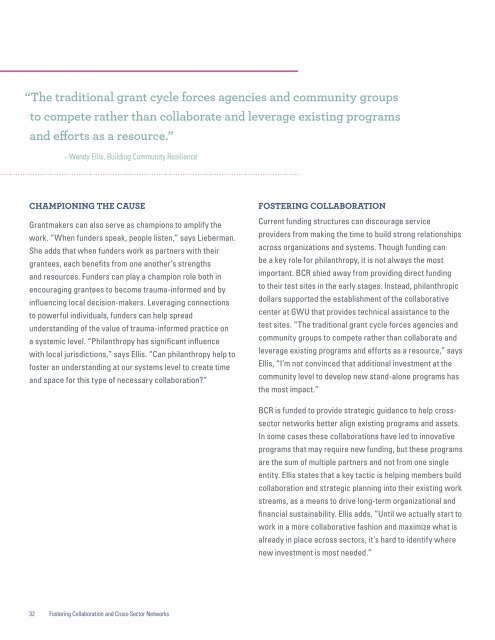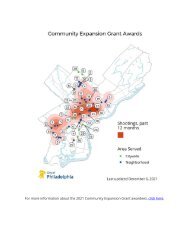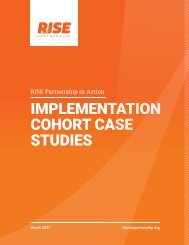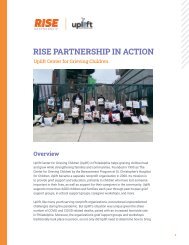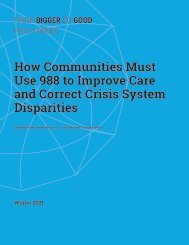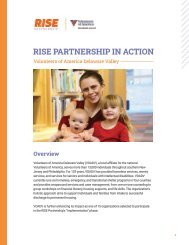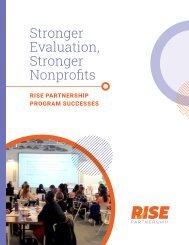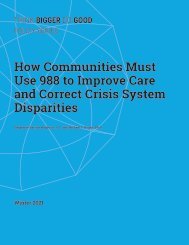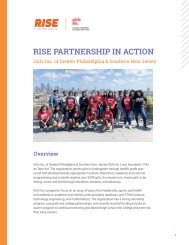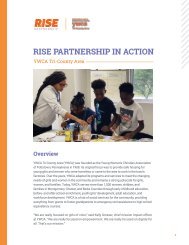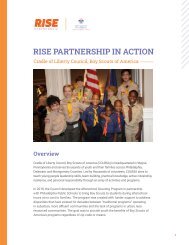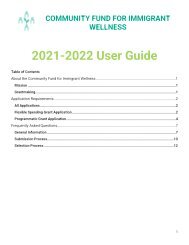Trauma-Informed Philanthropy Vol2
Create successful ePaper yourself
Turn your PDF publications into a flip-book with our unique Google optimized e-Paper software.
“The traditional grant cycle forces agencies and community groups<br />
to compete rather than collaborate and leverage existing programs<br />
and efforts as a resource.”<br />
— Wendy Ellis, Building Community Resilience<br />
CHAMPIONING THE CAUSE<br />
Grantmakers can also serve as champions to amplify the<br />
work. “When funders speak, people listen,” says Lieberman.<br />
She adds that when funders work as partners with their<br />
grantees, each benefits from one another’s strengths<br />
and resources. Funders can play a champion role both in<br />
encouraging grantees to become trauma-informed and by<br />
influencing local decision-makers. Leveraging connections<br />
to powerful individuals, funders can help spread<br />
understanding of the value of trauma-informed practice on<br />
a systemic level. “<strong>Philanthropy</strong> has significant influence<br />
with local jurisdictions,” says Ellis. “Can philanthropy help to<br />
foster an understanding at our systems level to create time<br />
and space for this type of necessary collaboration?”<br />
FOSTERING COLLABORATION<br />
Current funding structures can discourage service<br />
providers from making the time to build strong relationships<br />
across organizations and systems. Though funding can<br />
be a key role for philanthropy, it is not always the most<br />
important. BCR shied away from providing direct funding<br />
to their test sites in the early stages. Instead, philanthropic<br />
dollars supported the establishment of the collaborative<br />
center at GWU that provides technical assistance to the<br />
test sites. “The traditional grant cycle forces agencies and<br />
community groups to compete rather than collaborate and<br />
leverage existing programs and efforts as a resource,” says<br />
Ellis, “I’m not convinced that additional investment at the<br />
community level to develop new stand-alone programs has<br />
the most impact.”<br />
BCR is funded to provide strategic guidance to help crosssector<br />
networks better align existing programs and assets.<br />
In some cases these collaborations have led to innovative<br />
programs that may require new funding, but these programs<br />
are the sum of multiple partners and not from one single<br />
entity. Ellis states that a key tactic is helping members build<br />
collaboration and strategic planning into their existing work<br />
streams, as a means to drive long-term organizational and<br />
financial sustainability. Ellis adds, “Until we actually start to<br />
work in a more collaborative fashion and maximize what is<br />
already in place across sectors, it’s hard to identify where<br />
new investment is most needed.”<br />
32 Fostering Collaboration and Cross-Sector Networks


